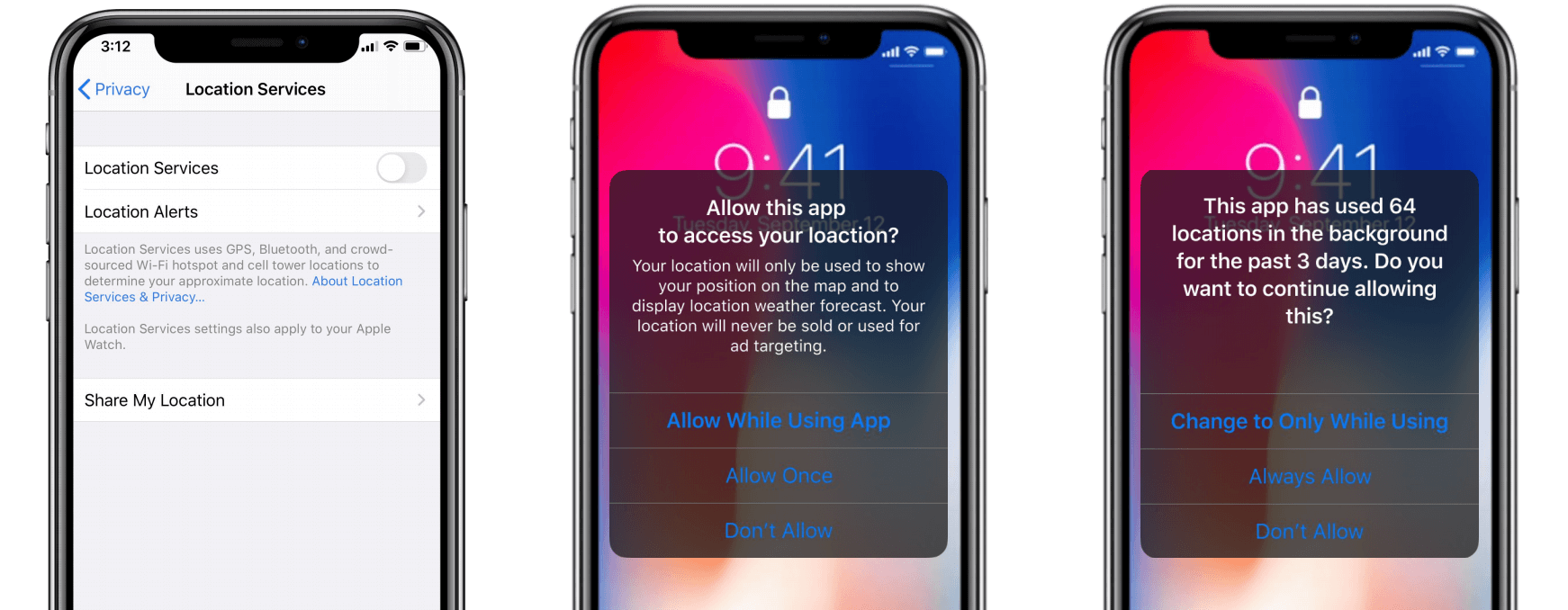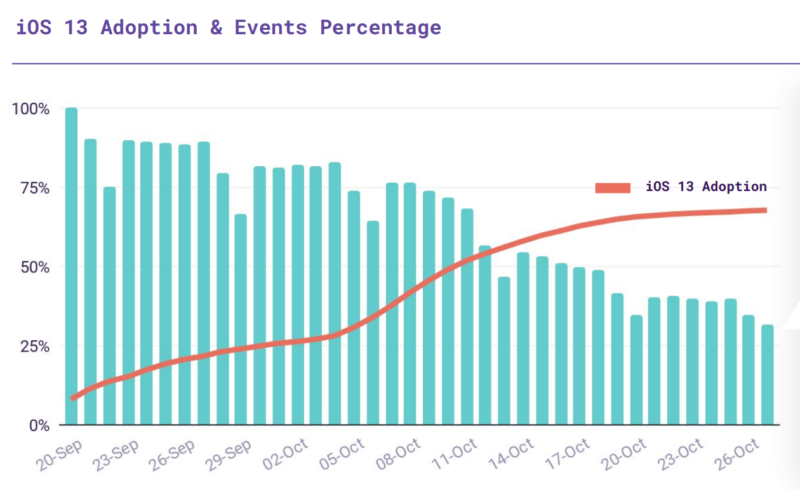There’s been a nearly 70% decline in always-on location data, since iOS 13 rollout
More than GDPR and CCPA, operating system privacy controls may impact the the availability and quality of location data.
Perhaps more than GDPR or CCPA, Apple’s iOS 13 privacy controls and location alerts may impact the availability of user location data — just as it’s becoming a critical tool for marketers. According to research from location verification company Location Sciences, since the adoption of iOS 13 the company has seen “a 68% decrease in background location data.”
Decline in background location data. Background location is “always-on” location collected at the device level as the user proceeds through the day and moves from place to place. Foreground location is captured only when a user has an app open.
Background location is generally more accurate for a range of marketing purposes than isolated data points collected while an individual is using an app. That’s because always-on location regularly taps into a GPS signal to provide a moment-by-moment view of user movements vs. only a few hits throughout the day or week (or less frequently).
iOS 13 location alerts and privacy controls

The above finding is based on an analysis of “two billion background location events” analyzed during September and October 2019 for a single UK-based app publisher. Accordingly, it’s unclear how representative this data is of the broader market, but it’s probably directionally accurate at a minimum. (An earlier survey-based study from Blis found that people are consciously exercising greater control over allowing their locations to be tracked.)
Decline in data accuracy. In addition, Location Sciences says it has seen “a 24% decrease in GPS data post iOS 13, nearly doubling the amount of low accuracy IP. This signals a shift in location data quality priorities in the face of privacy.”
GPS data is generally accurate to within a few meters. IP-based location, which comes from mobile phone carriers and ISPs, is much less accurate, between 1 kilometer and 20 kilometers for fixed IP address and less accurate for dynamic IP. But it’s much more widely available.
Decline in supply of available background location

Location Sciences infers in its report that “The decrease in background location data vs. that of foreground location data suggests that consumers are more averse to sharing data when they are not using the app or receiving location-specific value in exchange for shared data.” As a general proposition, the majority of mobile users are now aware of location tracking. Consumers have indicated in numerous surveys that they’re typically willing to share location when they understand the benefits of doing so or are rewarded in some way.
Why we care. If background and high-quality location data become less available over time, according to Location Sciences, this will “ripple through media delivery, personalized ad experience, audience segmentation and most importantly location analytics.” The company says that high-quality location data (or marketing supported by it) will likely cost more in the future.
Marketers will need to better understand location data sources and perhaps consider using a third party to audit location data. For developers and publishers, enticing users to share location — except for things like maps — will require a better user experience or improved incentives.
Contributing authors are invited to create content for MarTech and are chosen for their expertise and contribution to the martech community. Our contributors work under the oversight of the editorial staff and contributions are checked for quality and relevance to our readers. MarTech is owned by Semrush. Contributor was not asked to make any direct or indirect mentions of Semrush. The opinions they express are their own.
Related stories